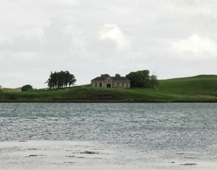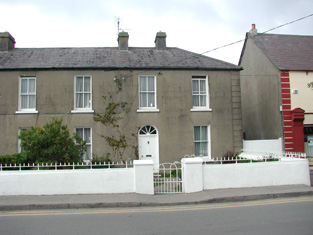Scurmore
Houses within 5km of this house
Displaying 10 houses.
Houses within 5km of Scurmore
Displaying 10 houses.
| House name | Description | |
|---|---|---|
| Cottlestown | The Kirkwood estate was centred on Cottlestown House. The name seems to have sometimes been known as Castletown and this is how it appears on the First ed. OS sheet but documentary evidence would seem to suggest the estate was also known as Cottlestown. The Buildings of Ireland survey states that it is likely that the present house was added to an earlier, probably eighteenth century structure, which in turn replaced the fortified house on the site. On modern OS sheets the townland is known as Cottlestown. This property later became part of the Boyd estate. |

|
| Moyview | Moyview was part of the Wingfield estate but was let to other families at different times. At the time of Griffith's Valuation, it was being leased by Robert Warren and was valued at £12. There is still an occupied house at this site though McTernan notes that the original house was an eighteent-century single story thatched residence. | |
| Knockroe | Knockroe house was part of the Wingfield estate and at the time of Griffith's Valuation was valued at £12. The property is now part of a farm. The remains of the entrance gates are supported by an iron bedpost! | |
| Kinard Lodge | The Ordnance Survey Name Books record Kinnard Lodge as the property of the Paget family in 1837. It appears that it, like other houses in the area, was used as a summer bathing lodge. At the time of Griffith's Valuation, it was occupied by James Paget and was valued at £9. A second house in the townland was occupied by Henry Simpson, leasing from James Paget, and was valued at £6. Kinard Lodge is still extant and occupied. | |
| Rosserk | Captain Green resided here in the 1830s. At the time of Griffith's Valuation, Capt Augustus Bolton was occupying a property valued at £10. On the 25-inch Ordnance Survey map of the 1890s a different building, adjacent to a large corn mill and located at G243252, is labelled Rosserk House. Buildings are still extant at this site. | |
| Bartragh House | A Kirkwood family home in the 19th century. At the time of Griffith's Valuation, the property was leased by William Hopper from the Kirkwood estate when the buildings were valued at £16. A house is still extant at the site though in a dilapidated state. |

|
| Moyne Abbey | Associated with the Lindsey family in the 17th century it was leased to the Knoxes by James O'Hara, Lord Tyrawley, for 999 years in 1741. The Knoxes built a private residence on to the east end of the friary. At various time the Jones, Palmer and Kirkwood families leased parts of Moyne. Thomas Jones sold his interest in the Landed Estates' Court in 1867. The Ordnance Survey Name Books record that Peter Nolan, agent to Sir William Palmer, lived in a neat cottage in the east of the townland. This may be the property labelled Moyne House on the 25-inch Ordnance Survey map of the 1890s (G228287), the remains of which are still extant. | |
| Seaville or Seaview House | At the time of Griffith's Valuation James Kerr was leasing a house valued at £12 at Carrownurlaur from the Wingfield estate. It is labelled Seaville House on the First Edition Ordnance Survey map but as Seaview House on the later 25-inch edition of hte 1890s. Portion of the original building remains. | |
| Orme's Lodge | Robert Orme was the owner of several properties in the village of Enniscrone, Carrowhubbuck South, barony of Tireragh, at the time of Griffith's Valuation. These properties had valuations of between £12 and £20. McTernan notes that one of these was Orme's Lodge which remained in the family until the 1930s. It subsequently became a hotel and was demolished in the 1990s to make way for new house building. |

|
| Rinroe House | Rinroe was leased from the Wingfield estate by John Boyd at the time of Griffith's Valuation, when it was valued at £8. It later became a residence of the Ormsby family, relatives of the Ormsbys of Glen, and remained in that family until the 1960s. Earlier, in 1786, Wilson refers to it as "Bunro, the seat of Mr. Leech". The house is still extant. |

